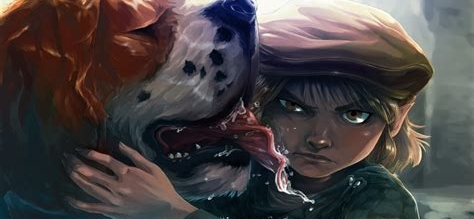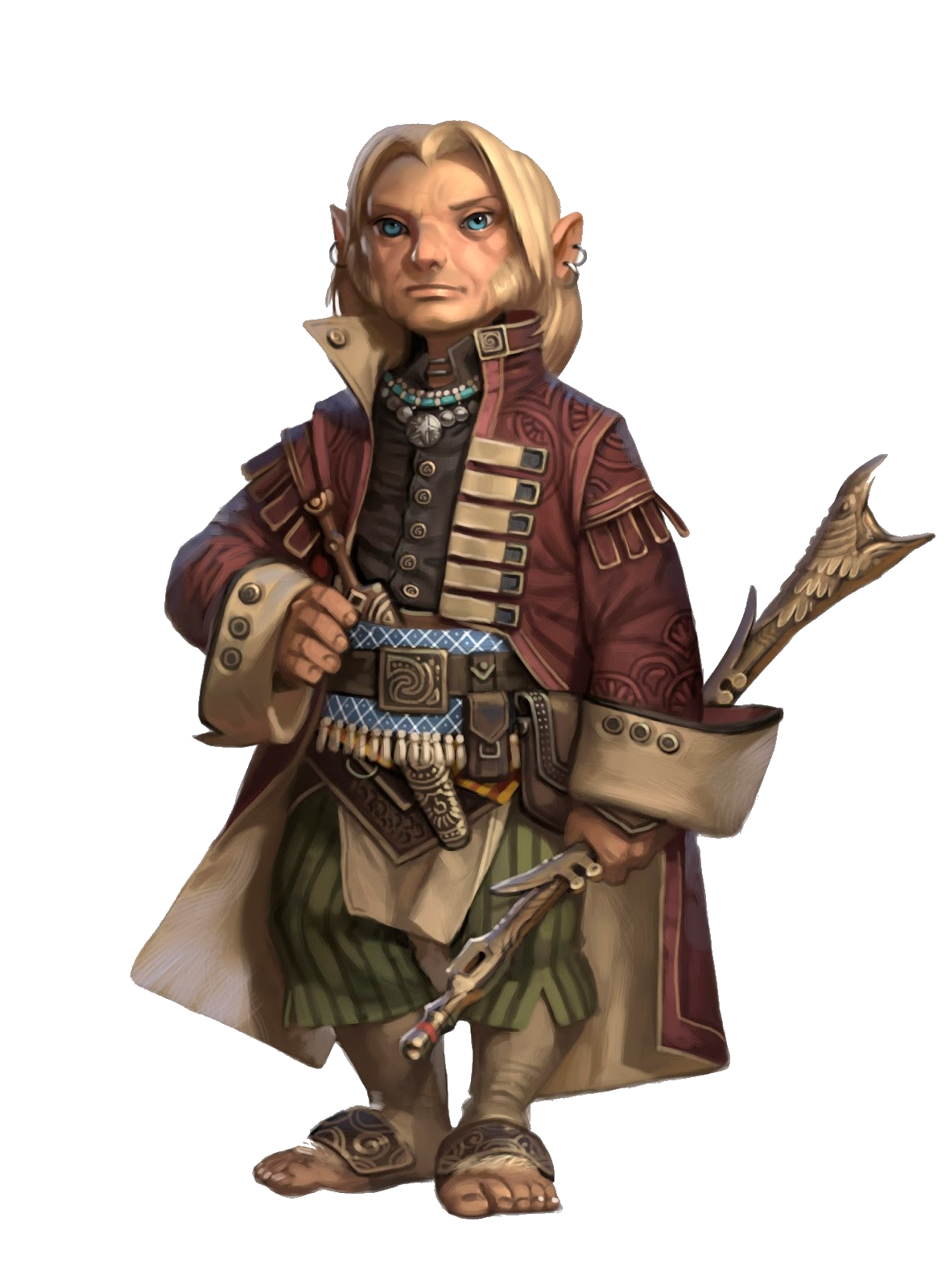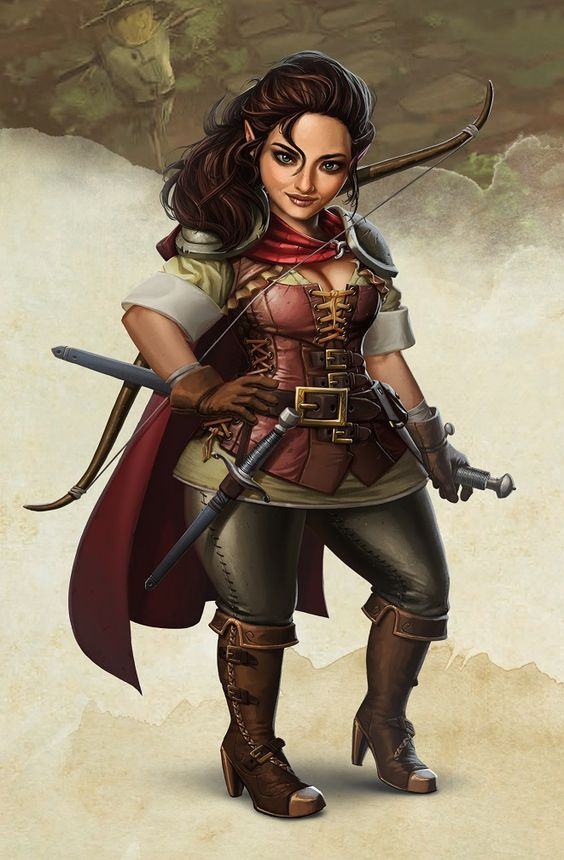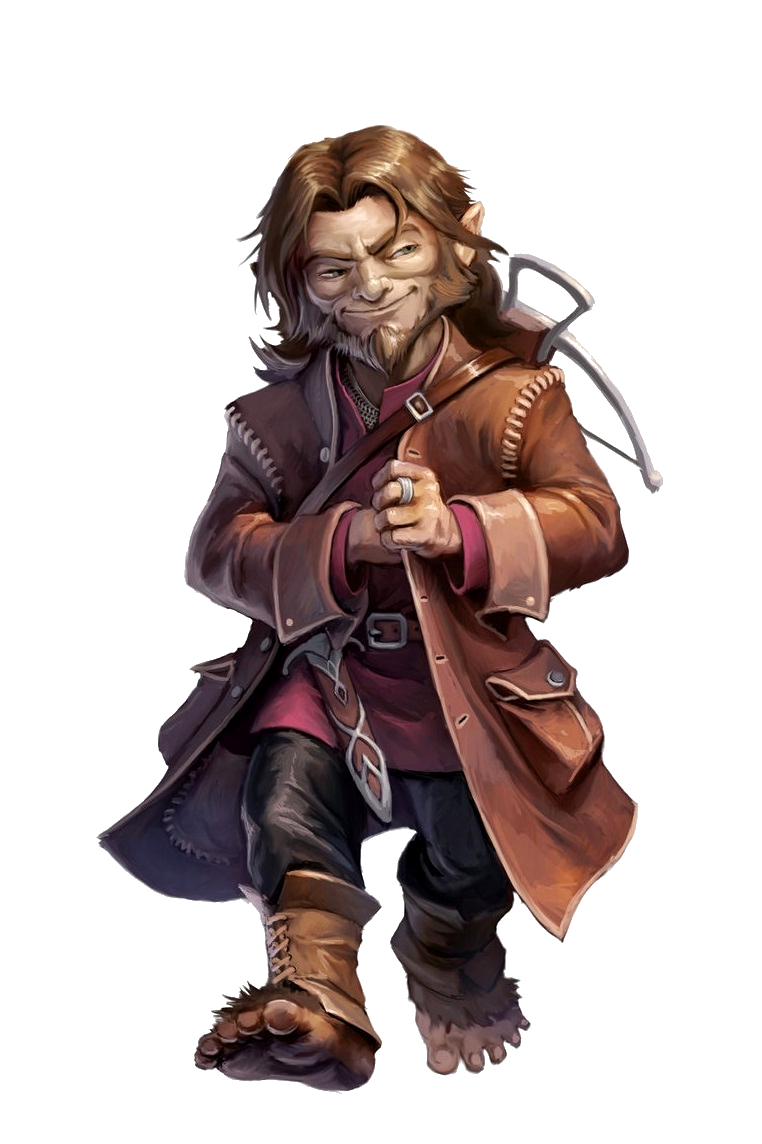Racial History
Halflings were one of the newer races on Toril, and were discovered towards the latter half of the first age on a small archipelago kingdom called
Lurien. The original homeland or development of these simple folk is unknown, and their ancient homeland was tragically devastated in the Astral war, scattering the small people across the continent.
Since then, the halfling people have claimed many homelands, finding comfortable homes in all the nooks and borderlands of the larger, noisier kingdoms, but many have stuck to a nomadic way of life, travelling between mostly human settlements finding places to settle. The halflings are most commonly found in human towns or small halfling-dominated villages in
The Northern Wildlands or across the
Kingdom of Edea, often settling down as farmers, simple merchants or craftsmen and women.
Halfling society
Culture
Halfling communities were tightly knit groups found around the world, usually near the settlements of other races. Most halflings didn't recognize the claims of kings or nobles as sovereign rulers but instead looked primarily to their family elders to guide them. This focus on bloodlines enabled halfling traditions to continue for millennia relatively intact. Halflings also valued a sense of community; halflings naming each other "halfling" was a salute of brotherhood.
Halfling culture had a fondness for stories and legends and was rich in the oral tradition. So much care was put into the retelling of traditional stories and their preservation that halflings often unwittingly had access to lore about ancient and long-gone cultures or empires that others had long since forgotten about. Many halflings were able to recall some detail of the ancient past, though it was usually wrapped in the shrouds of legends.
The halflings followed the creed of the
Lords of the Golden Hills, the gods of the simple races also worshipped by the
Gnomes. Their primary deity was
Yondalla, the goddess of the halflings and fertility, and many halfling settlements dedicated their frequent merry celebrations to her. They also paid heed to many others in their pantheon, all of which were naturally good deities.
Interracial Relations
Over time, many halfling communities have been stomped out or conquered by expanding kingdoms and empires, and many halflings have succumbed to slavery by wicked monarchs or tyrannical orcs. Their humble life and simple communities make them vulnerable, and this constant threat had made many halfling socieites on the edges of civilisation inward looking and distrustful of strangers, seeing highly populated and industrialised societies as distasteful. Despite this, halflings remained friendly to those who earn their trust.
Halflings, in general, tried their best to get along with everybody, though exceptions did exist and ghostwise halflings were notoriously xenophobic. Lightfoot and strongheart halflings, however, were friendly and outgoing and were uncommonly adept at fitting into communities of humans, dwarves, elves, or gnomes. Most halflings, in fact, didn't live in communities of their own but instead regions dominated by other races. This was particularly true in human societies, which attracted halflings because of the comparative rapidity with which they changed. It should be noted that halflings usually found insults directed at them to be amusing rather than insulting.
Lightfoot halflings were the most common type of halflings seen in the world, in large part due to their famous wanderlust, which set them apart from the relatively sedentary ghostwise and strongheart halflings. Lightfoots were most comfortable living alongside other cultures, even adopting their cultural practices, right down to their deities.
Lightfoots were among the most affable and good-natured halflings. They were typically curious about others and very open to sharing about themselves. Altogether these aspects of their personalities kindled fast courtships and friendships with others. These were often brief, for most lightfoots innately felt a sense of wanderlust that compelled them to not stay in one place for too long. Though lightfoots were very loyal and such relationships were genuine, some felt the way they so deftly parted ways made those friendships disingenuous.
Due to their personalities many races stereotyped lightfoots as being fickle and flighty in nature, being unreliable and easily distracted. However, despite the impression they gave such races, these halflings were very cunning, opportunistic, and resourceful individuals.
While not exactly greedy, halflings did enjoy wealth and respected the power and pleasures it could bring. However, they were careful not to let greed compromise themselves or their society. In addition to information gathering, many halflings became collectors of different objects, ranging from mundane items like books or weapons to more exotic interests such as artifacts and other ancient secrets.
Lightfoots preferred to fight defensively and were skilled in the art of stealth. Their tactics were similar to elves, though they emphasised being concealed and taking cover more than mobility, taking shots at their foes from afar.
Due to their skill-sets, this sub-race of halflings were often bards, rogues and rangers, though the profession of fighter was equally encouraged and some even took to being adventuring druids.
Lightfoot Halfling Society
Lightfoots formed tight-knit communities, especially in the cities of other races. Some travelled in small bands, often switching members when they come across another band, while others travelled in clans made up of several extended families. Members of such communities often packed up and collectively moved together to locations that offered new or better opportunities. Some communities just moved regularly, embracing a nomadic lifestyle. When communities travelled they typically did so in wagons or boats.
Lightfoots adored keeping pets, for the sake of both protection and companionship. They often kept some form of large hound. Another common animal kept were foxes, who they admired for their stealthiness and cunning.
Lightfoots typically excelled in professions related to travelling, such as cartwrighting, handling of pack animals, navigating, and sailing. Those who who spent their lives wandering tended to learn many of the skills associated with these tasks along their travels. Some lightfoots were known to take up the profession of a craftsman, entertainer, or merchant.
Much like their kin, lightfoots tended to be entertainers (musicians) or craftsmen, engaging in jobs such as carving and pipesmithing. But they were particularly renowned for being skilled carpenters. Other tallfellows were known to work as cheese-makers, dairy farmers, hunters, loggers, scouts, sheperds, and stablemen. They tended to be better skilled at farming than stout halflings.
Magic and Religion
Lightfoot halflings tend to be generalists when it comes to magic, using a broad array of spells and magic items to make their travels—or their hearths—more pleasant. They are skillful clerics and sorcerers, but sometimes lack the discipline to become
accomplished as wizards.
Like other halflings, the patron deity of lightfoots was the goddess Yondalla. Her faith was popular among both sedentary and nomadic lightfoots. The latter also tended to favour the halfling god
Brandobaris, as they considered his outlook on life to be realistic and good-humored.
Cyrrollalee was widely popular in later generations, taking to her promises of a new homeland and greater respect from other races. Out of all halflings, lightfoots were the most likely to worship gods outside of the halfling pantheon due to their notable presence in non-halfling societies, though they often worshipped those who lined up with standard halfling virutes.
Strongheart Halfling
Strongheart or stout halflings were a subrace of the good folk who were moderately shorter and stockier than their lightfoot kin. They also had a greater tendency for wearing armour of all kinds. Much like dwarves in nature, they had high constitutions and could see far in darkness, and thus were known to spend long nights drinking heavy ale.
There was very little that could upset most stronghearts or corrupt them. Their outlook on life stressed cooperation above all else, with one's skill in teamwork being among the most valued of behaviors in their lands. Some races stereotyped them as being fat or lazy due to their sedentary nature and love of fine food. However, they were simply patient as well as very industrious. They put great emphasis on quality.
Outside of their home villages, stout halflings were often found in dwarvern settlements and could survive long periods underground. Their love for strong ales often drew them to settle down in these regions in their old age, and it was unsurprising to see a stout halfling tag along in a party of dwarves. Some even believed that stout halflings had dwarven blood.
Stout Halfling Society
The teadfasts have evolved a unique, semi-nomadic lifestyle, in which businesses, families, and even entire clans move freely and independently from place to place. This fusion of wanderlust and stability is a source of wonderment and confusion for visitors, who find it difficult to comprehend how a society can enjoy such seemingly whimsical mobility while retaining any viable structure.
For their part, most of the strongheart hin cannot understand why anyone would want to tie themselves permanently to any one community or structure for their entire lives.
Stout halflings usually lived in temperate hilly, mountain or plains regions seeking out a place to permanently settle. It was not uncommon to come across a large band of stout halfling with tents and equipment double or triple times their weight on the back of a donkey attempting to find the perfect place to settle down.
Magic and Religion
Out of all halflings, stronghearts invested the most into the practice of magic and stationery magic items were somewhat common. Many communities had continual flames lighting their town squares at night or walls that repelled the arrows of attackers. Not every village has such wonders, for the stronghearts aren’t profligate in their spellcasting. But most strongheart spellcasters devote their efforts to improving the lot of their communities—even if the spellcasters themselves will be moving on once their work is done.
The scrupulous stronghearts take care to honor all the deities in the halfling pantheon, but their way of life reflects the
influence of certain powers more than others. They do not favour any deities from other pantheons, and they actively discourage
halflings from venerating the gods and goddesses of other races.
Among all the halfling subraces,
Arvoreen enjoys
the strongest worship from the stronghearts of Toril. While the hin venerate all the deities of the halfling pantheon in their turn, they hold the Vigilant Guardian in very high regard. His simple dogma has was the de facto motto of their old nation: “Vigilance against attack will protect the community. Prepare an active defense, drill continuously, and leave nothing to chance. Put down danger before allowing it a chance to rear its head.” Clerics of the Wary Sword are among the race's foremost religious, political, and military leaders; most of them multiclass as fighters. Strongheart druids and rangers frequently venerate
Sheela Peryroyl, the Green Sister, and they encourage their fellow hin to be mindful of the need to balance their communities’ expansions with the need to preserve nature.
Yondalla is the most popular halfling deity after Avoreen among the stronghearts. Many of the subrace who dwell in Luiren
find the dichotomy of her faith—do not welcome violence, but defend the home and community fiercely—to be reflective of the strongheart outlook. Yondalla reigns supreme in halfling society whenever matters of family and tradition are invoked, and her clergy enjoys considerable respect and influence in the most important tribal councils.
Ghostwise Halflings
Ghostwise halflings are the most uncommon of the halfling subraces. They are elusive and often live in tribes far from civilisation, preferring to be hidden and elusive from any other settlements. They are far more mistrustful than their strongheart or lightfoot cousins, and do not welcome strangers into their lands.
Ghostwise halflings are typically more stealthy, dexterous and tricksy, and often more ruthless than other halfling sub-races. Their innate distrust and scepticism of strangers often leads them to typically more sly tactics. Ghostwise halflings were generally very concerned (some might say obsessed) with family and clan. They do not experience as much wanderlust as the other halflings subraces and have an intense in-group preference compared to other halflings. As such, they are rarely found in the societies of other race.
Ghostwise halflings are also able to speak telepathically with creatures around them, making them proficient spies and adept at stealth and surprise.
Ghostwise Halfling Society
Because clan is the focus of the ghostwise culture, it is not surprising to find it the central factor in their society as well. The wanderlust that is one of the most readily discernable traits of both the lightfoot and strongheart subraces still survives in the
ghostwise, but on a more limited scale.
Each clan of ghostwise halflings adopts a segment of their homeland as its territory. Clan territories vary in size from less
than fifty to several hundred square miles. The clan travels together as its leader directs. A number of factors influence exactly
where the clan travels within its territory, including the presence or absence of hostile creatures and the relative abundance of game.
There is ample room in the vast forest for all the ghostwise halfling clans, and so their territories are only loosely defined. Many clans designate a natural feature—a distinctive rock, a lightning-struck tree, a stretch of a particular stream—as the
center of their territory and base their wanderings on their relative distance from this place. Some clans carry a tiny portion
of this central feature with them as they travel, to reinforce their spiritual connection with their territory and their homeland. Such tokens might take
the form of clay vials filled with stream water, small leather pouches filled with dirt from a specific spot, small bits of rock broken from a boulder and worn as a necklace, or even a bit of tree bark carried in the hollowed end of a deer’s antler.
Among these clans, such tokens are considered a sacred charge: To lose or misplace one is a mistake requiring that the transgressor atone in a manner designated by the clan leader. If the halfling who makes the error is a cleric or druid, the penance is assigned by a representative of his faith. The act of atonement— often a quest or other dangerous mission or errand—must be completed successfully before the halfling may obtain another portion of the clan’s central feature. Willfully destroying a clan token is a grievous crime, punishable by exile (a fate far worse than death in the culture of the ghostwise halflings).
The only permissible use of the tokens is when a member of the clan falls in battle. In that event, all nearby hin who share the same tribe as the fallen scatter their tokens, be they wood, water, or stone, around the corpse. The hin believe that doing so calls the attention of their deities and ensures that no fell spirits will disturb the body of their fallen clan member until it can be
attended to properly. The ghostwise hin clans cremate their dead rather than inter them.
While clans keep to themselves, they do not shun one another when they meet in their travels. Instead, they exchange news and information about the forests’ conditions and creatures. Indeed, the matriarchs and patriarchs who lead the clans often meet formally to discuss matters of mutual interest and importance. Multiple clans cooperate for the purpose of mutual defense when they are threatened by a common enemy, whether it be a band of destructive humanoids or a marauding band of trolls.
Magic and Religion
Most ghostwise halfling spellcasters are clerics or druids—sorcerers and bards are rare, and wizards more so because so few ghostwise regularly use a written language. Like wood elves, ghostwise halflings sometimes add extra components to their spells to further emphasize their connection to the land. Ghostwise halflings favor divination spells that help them safely learn about threats beyond their land, and illusion spells that keep them well-hidden.
The ghostwise acknowledge and give due respect to all the deities in the halfling pantheon. Each clan, however, tends to adopt one specific halfling deity as its patron and venerates that power above all others. Because of their nomadic lifestyle, the ghostwise hin do not build permanent temples to the gods. Rather, they maintain small shrines throughout their homeland and
carry symbols of their clan’s patron with them as they wander the reaches of the forest.





Comments